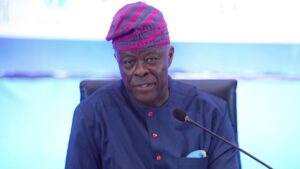National Development Plans from 1986 to 2025 are similar, there’s room for improvement — Aliko Dangote
By Omolola D. Adeyanju
The President/CE, Dangote Group, Alhaji Aliko Dangote, GCON has revealed that the first four National Development Plans and the plans from 1986 to 2025 all have similar industrial aspirations and there is plenty of room for improvement because set targets have largely not been attained owing to some factors which include; neglect of agriculture and manufacturing due to oil boom; foreign technology dependent industrialization; policy inconsistency, poor policy implementation; dearth of local technical skills; low indigenous participation in manufacturing; dependence on external loans; ill – conceived projects and more.
The Group President stated this during his lecture at the second Adeola Odutola lecture in commemoration of the 50th Annual General Meeting of the Manufacturers Association of Nigeria.
According to him, “Nigeria has for many years remained in the cadre of developing nations’ as income, economic development and standard of living largely remain below average. The country is one of the least industrialized countries in the world data information. Although Nigeria’s manufacturing sector is the largest in the ECOWAS sub region and one of the largest in Africa, yet it is dominated by light manufacturing with only a few firms operating in the heavy segment of the sector. Nigeria’s manufacturers are overly dependent on imports for machinery and equipment, liquid fuels, spare parts, some raw materials and consumables.
“The sub-optimal performance of the sector is due to the existence of binding constraints, some of which include: Acute shortage of foreign exchange; limited infrastructure; over regulations; multiple and high tax rates for the industries as well as insecurity to name a few.”
Speaking on the Agenda for the next 10 years, the Group President identified the need for Nigeria to intensify efforts at promoting industrialization with focus on targets for the next 10 years.
“15 per cent manufacturing sector growth, 20 per cent manufacturing contribution to GDP, 15 per cent growth in export of manufactured products, 10 per cent increase in the share of manufacturing to total export merchandise, stronger inter – industry linkage between SMEs and large corporations, improved manufacturing contribution to government tax revenue and 20 per cent increase in employment.”
He outlined several implementation roadmaps to industrialize the nation and achieve the targets for the next decade which are — adequate investment in infrastructure, creation of business — enabling policy framework, provision of accessible financing scheme, development of institutional and regulatory framework, development of core industries, macroeconomic stability, facilitation of sectoral linkages and provision of security.
The Group President advised that the government at all tiers consult widely with relevant stakeholders when taking far reaching decisions in key sectors of the economy as it will make it much easier for manufacturers to make long-term business plans.
According to the President, Manufacturers Association of Nigeria, Engr. Mansur Ahmed the industry is set for growth with the right policies in place. He reiterated the need for a synergy and focus on the manufacturing sector as industrialization process is challenged by structural and institutional constraints.
The Director General of the association, Segun Ajayi Kadir MNI, urged the government to include and enforce adequate industry oriented policies and assured that industrialists are working round the clock to achieve great developments in the industries.




